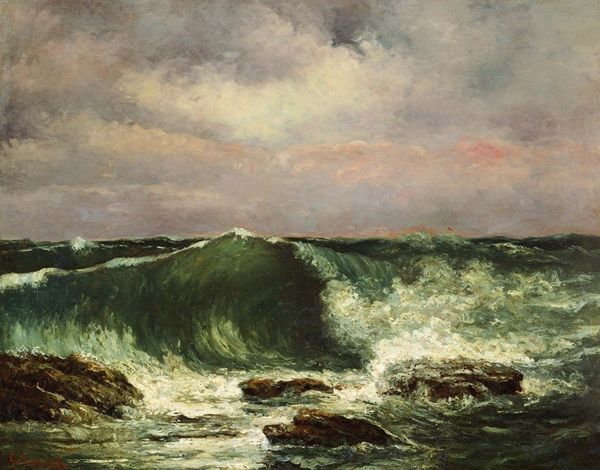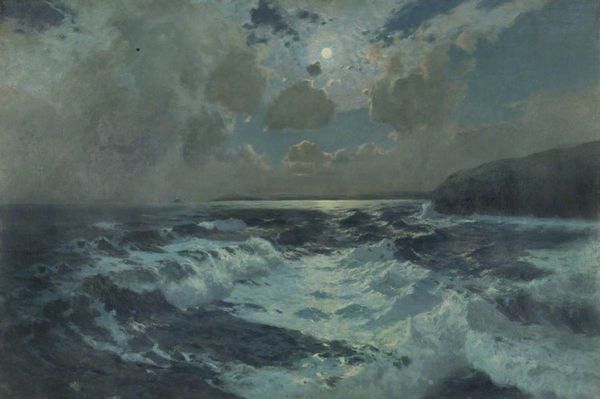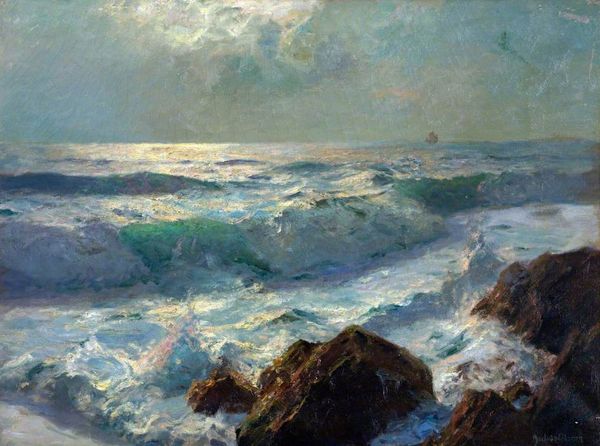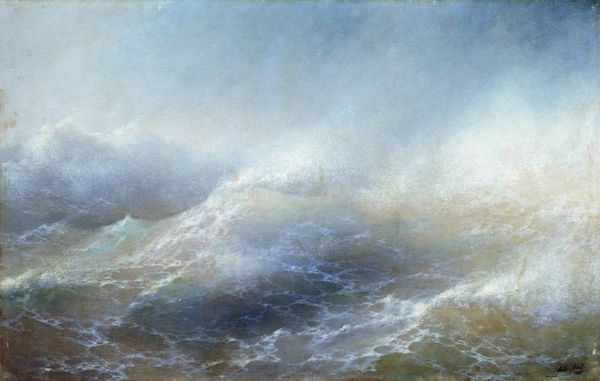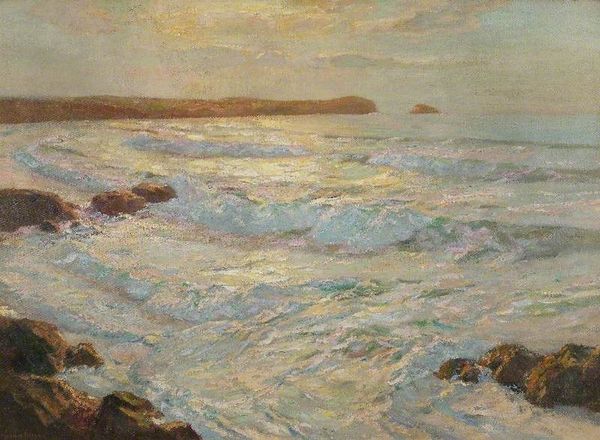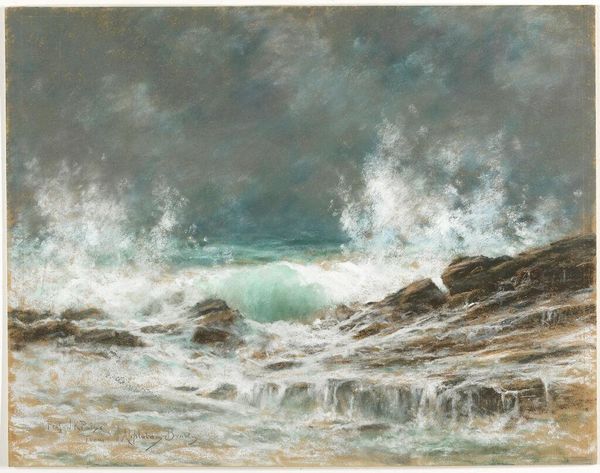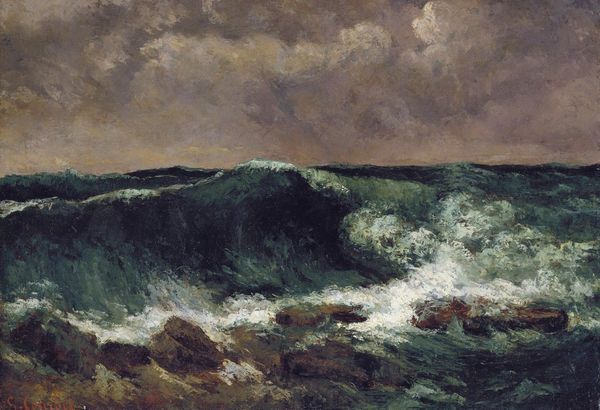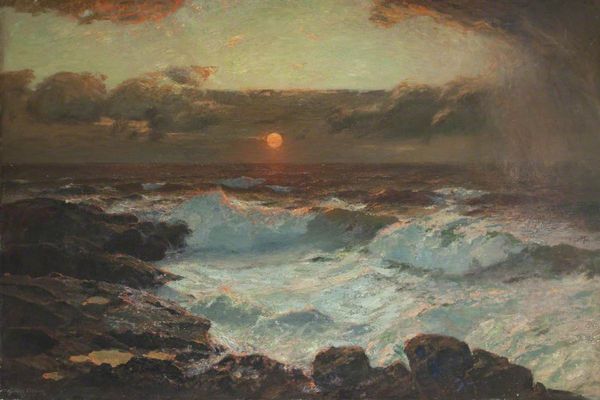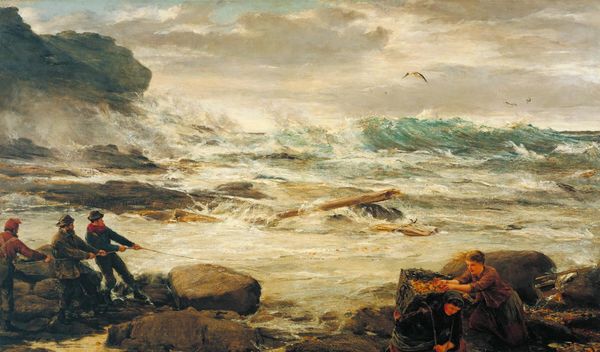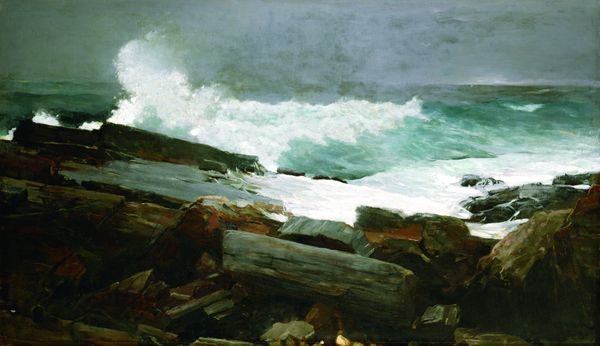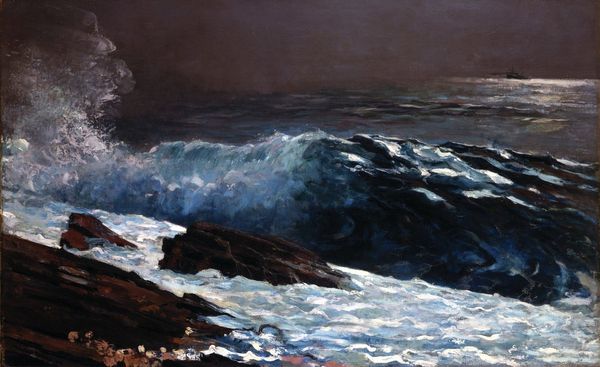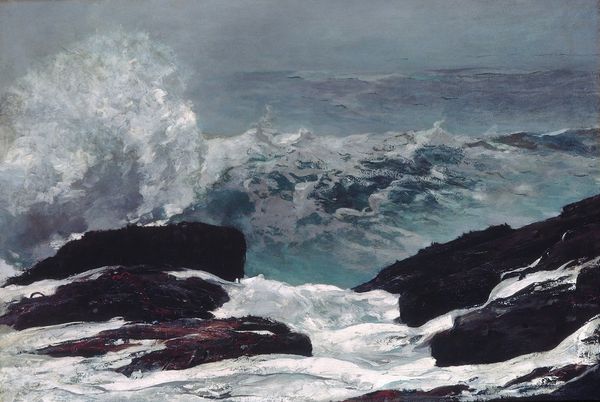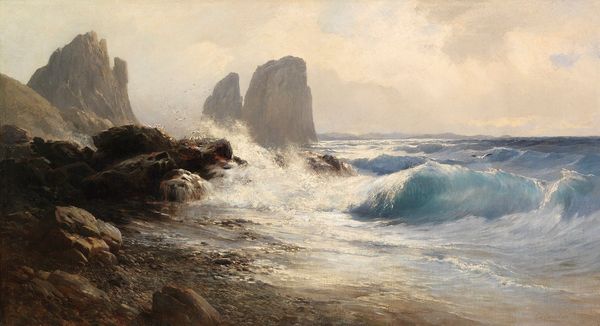
#
abstract expressionism
#
sky
#
abstract painting
#
impressionist painting style
#
impressionist landscape
#
possibly oil pastel
#
oil painting
#
acrylic on canvas
#
seascape
#
painting painterly
#
watercolor
#
sea
Copyright: Public domain
Editor: So, here we have "Waterfall in Sweden" by Albert Julius Olsson, painted in 1940. It seems to be an oil painting depicting a seascape. I’m immediately drawn to the chaotic energy of the water, yet the muted color palette gives it a certain stillness. How do you interpret this work? Curator: I see a negotiation between the wildness of nature and humanity’s attempts to define it. Olsson paints during a time of great upheaval, right? Think about the socio-political context of 1940. The Second World War is raging. Does this painting reflect a desire for escape, a return to nature's indifferent power in the face of human conflict? Consider the sublime tradition. Do you see a connection here, and how might it be complicated by a Scandinavian context? Editor: That’s interesting, I hadn't considered that connection to the sublime or the historical backdrop. I was mainly focused on the surface, the paint itself. It feels… raw. Curator: Exactly. Olsson’s brushstrokes are so visible, almost violent in their application. How might we connect that painterly quality to broader discussions about masculine expression in art? Is this a deliberately masculine rendering of nature, or can we see something else here, perhaps a vulnerability in the face of nature's power? Does it have to be masculine? Editor: I think I initially fell into the trap of assuming "powerful = masculine." But maybe it's more about the overwhelming force of nature, and less about gendered performance. Curator: Precisely. And it's crucial that we keep questioning our assumptions and expanding our perspectives. What did you find most insightful during this process? Editor: Understanding how the socio-political context of the time and the artist's potential intent influence how we view the artwork, especially when considering historical interpretations and narratives. Curator: And questioning those influences can lead to a richer and more nuanced understanding. It highlights art’s power to both reflect and challenge our world.
Comments
No comments
Be the first to comment and join the conversation on the ultimate creative platform.
